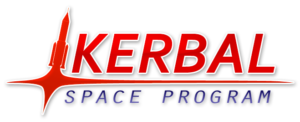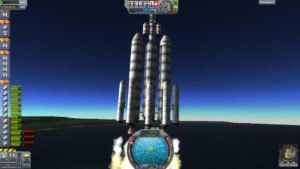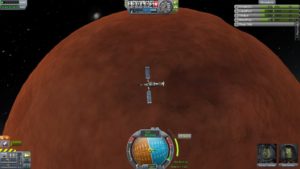During the Steam summer sale I picked up a lot of great games, but none of them has so held my interest and attention as much as Kerbal Space Program, which is often abbreviated KSP by fans. It is still in Alpha, but is available for purchase now from the developer’s website or from Steam. Buying now is not only cheaper than the retail price when it is fully released but gives you access to the game now, which actually plays very well in its current state.
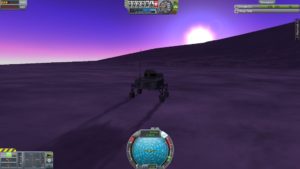 |
| My interplanetary rover explores the surface of the planet Eve, far from its home on Kerbin (the Kerbal home world). |
 |
| I have a fairly functional space station in orbit of Kerbin that has refueling capabilities for interplanetary ships. It works with basically only two modules joined together with docking ports. |
Yes, it can be a little buggy, but it is really, really fun. The game involves building various vehicles such as rockets, space planes, and rovers. You can also launch satellites and space stations to support your operations. Thus, a major part of the game’s charm is the sheer thrill of conquering space. Success depends on harnessing the power of physics and avoiding its pitfalls. Designs must harness the forces of gravity and aerodynamics to be able to do anything in the game, not to mention the careful balancing of engine power and the amount of fuel (because everything, including fuel, has weight that requires more power).
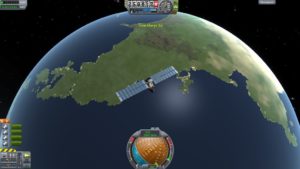 |
| The first achievement most players make is to make it into orbit. This satellite was the first stable orbit I created after several failed launches. It felt great to finally do it! |
If it sounds difficult, that’s because it is. Despite its cute visuals (the Kerbals themselves are adorable little green men), the game is unforgiving and difficult. Slight mistakes can cause catastrophic failure in all its explosive glory. Thus, learning the game includes a lot of trial and error. I have often lost a ship because I forgot one strut or a solar panel, which makes the ship unstable during launch or left adrift and powerless in space.
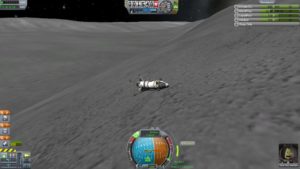 |
| My first botched landing on the Moon (or Mun as the Kerbals call it). This pod blew up when I tried to get it right side up, so the next design was much better balanced. |
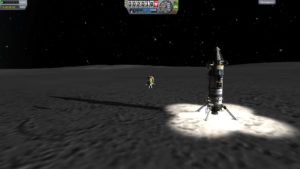 |
| The next mission worked much better. |
Yet, despite its unforgiving physics, the game is remarkably open to new players compared to other space simulation games, which tend to be extremely technical and understandable only to physics experts. You only need a small amount of knowledge to get started, although as you play you will likely learn more physics and maneuvers. It is user friendly in that failure is easy to correct. As of version .21, you can revert time to the vehicle design building without losing anything, allowing you to put in that missing strut and try again. Also, because we are in alpha, the only mode available is a sandbox mode, where your budget is infinite and your goals are your own. This is probably the easiest way to learn the game because budgetary constraints would add design problems all their own because adding those extra boosters you need to get to space might become cost-prohibitive. In sandbox, that is not a concern, so you can make mistakes in design that will still work because you can build expensive corrections to most problems. These measures allow anyone to learn relatively easily a bit about rocket science as more and more complicated vehicles are launched.
That being said, I really recommend watching videos of various commentators about the game. In this way you can learn the physics involved in the game, see incredible designs by other Kerbal players, and get ideas for your own projects. One of the best Kerbal YouTube personalities is Scott Manley, who is himself a physicist but is incredibly easy for non-physicists to understand as he explains what is behind Kerbal space flight. I have learned a lot watching him and enjoy his videos. I have also started my own series that you are invited to follow. It is a tutorial that leads through a set of realistic projects that build upon one another in a similar manner to the way space exploration was developed in real life. I think that approach is most helpful to learn the game, so I hope you will follow along.
You will notice that I did not use my rubric to review this game or give it a score. This is because the game lacks a story without a campaign mode, so the story content and story pacing ratings are impossible to give and I’m not sure I could give the game a fair rating until that component is introduced. I will say, however, that I heartily recommend getting the game. Squad is very involved with the game and is releasing updates relatively frequently, so its support rating is very good. I am confident that most bugs will be resolved in time.
However, the main reason to get this game is because it is just plain fun and is so different from most other games out there today. It is not a shooter; in fact, the game eschews all forms of violence. This strategy makes it a unique experience as well as completely safe for children. It is not solely a children’s game though; rather, it is the rare game that can appeal to people of any age. In my opinion, this appeal stems from the nearly universal wonder of space travel. We saw in the 1960s how the drive to reach space brought people together and inspired an entire generation of scientists; Kerbal Space Program brings this same excitement to at least two new generations, mine as a young adult and the next generation of children whom KSP might in some small way inspire to pursue space exploration careers. I think this game has that kind of potential, but even if you already have a career it is well worth your time to play for the sheer delight it can bring you when you succeed in your projects, even if it took a ridiculous number of tries.
The mod community for Kerbal Space Program is very active. Check out the mods available at the Kerbal Space Port on Squad’s website.
I recommend the MechJeb mod, which adds autopilot and vehicle information panels (that actually tell you what a vehicle is capable of doing before you test it; very handy). The Kethane mod is also interesting because it adds a raw resource that can be mined in space and processed into various kinds of fuel, which is fun and also useful for interplanetary voyages. Remember that mods will likely need to be updated when new versions are released, so be aware of this when you are making the decision to use mods or not.
If you like my review, remember to subscribe!


